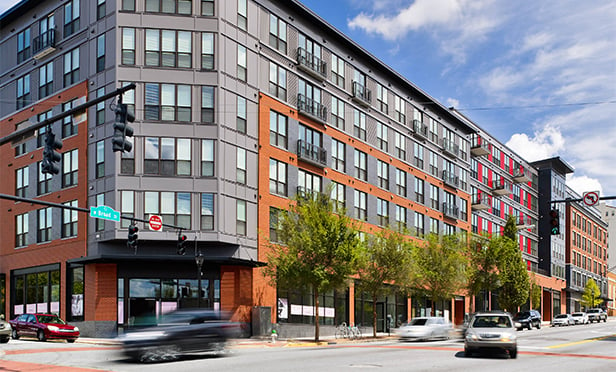LAS VEGAS—When is the last time you stepped into a brand new shopping mall? It's been nearly a century since the first shopping mall opened in the United States—U.S. construction deliveries of retail assets in 2013 were 76.6 percent below the high levels of 2008, and Q1 2014 deliveries for major markets were only 9.8 million.
The lack of new supply coupled with fluctuating consumer confidence is pushing retail real estate owners to strategically evaluate their current assets. “With limited supply, getting the environment right in existing assets has become crucial, and it's what really creates a resilient retail center. It is the basic building block of the physical offering, and can't be left to chance anymore,” JLL Retail's Karen Raquet told us.
According to JLL's Retail Property Management and Leasing experts, there are three key approaches retail owners can implement to boost their current assets:
1. Identify and Attract the Right Retailers:Looking holistically at the long-term viability of a center—three to six years down the road—rather than filling vacant holes as they occur can make all the difference. Securing the right retailers for a particular space and center is crucial, because regardless of how attractive, stimulating, well-located and connected a retail site is, it will only attract visitors if it has a platform that meets or exceeds the demanding requirements of the local consumer.
JLL's Director of Leasing Kimli Cross told us, “The shopping environment covers more than just the physical space, although this is extremely important, it is about how a space makes you feel as a visitor. Is it uplifting, entertaining, stimulating?”
2. Engage with the Local Community: A retail center does not, and cannot exist in a bubble—it's an intrinsic part of the community in which it sits, be it a suburban town, urban city, or even an airport. Building and promoting a strong identity for retail centers has become essential in an environment where competition is rife and where the shelf life of products and services appears to be diminishing. By giving back to the community, through the provision of free space for school art projects or charity events, retail centers can help to embed themselves into the heart of a community.
3. Detail Capital Improvements: Following the economic downturn, capital expenditure renovation work slowed substantially in the retail sector. Today, upgrades or additions of any size that restore and renovate a property can drive returns, and help a center overtake its competitive set. The biggest conversions that are likely to take place in the coming year will revolve around remerchandising and retrofitting space, including cosmetic remodels, and improvements to lighting, water and electric efficiency and consumption.
When these single strategies stand alone, they can in fact boost a property's shopper appeal, cash flow and positively impact sales in the near term; however, when they are combined, they can truly transform a retail space into a place that both creates and responds to demand.
The Ongoing Retail Evolution
The ongoing evolution in the retail industry—including near-global access to the Internet and speedy adoption rates of smartphones—is forcing retailers to create a brick-and-mortar shopping experience that rivals the convenience and immediacy of the Internet. As a result, hundreds of retailers in thousands of locations are committing capital to renovating stores for an enhanced overall customer experience.
JLL's Managing Director Steve Jones tells us, “Customer experience is individual to each retailer and the clients they target. It's crucial for retailers to ask the right questions and understand the role big data, technology and the omni-channel experience play in their overarching strategy so the appropriate renovations programs can be developed.”
JLL notes these three questions retailers should consider when defining the type and magnitude of renovations to enhance their customers' experiences:
1. Are we offering an omni-channel experience? Retailers striving to build a true omni-channel experience are merging at-home, in-store and mobile commerce into one seamless shopping experience. Customers want continuity, so the look and feel of every channel, from mobile to desktop to in-store, should be the same.
2. Are we leveraging the right technology? To keep people in their stores, smart retailers are making their locations interactive and engaging with the right technology. Tablets and smartphones can be used to promote convenience by taking customer payments rather than making them wait in line, demonstrate product features, offer more item options and encourage social sharing. In addition to tablets, the use of large displays purposefully engross customers, making them forget they're inside a store.
3. Are we collecting actionable data to help personalize the customer experience? Smart retailers know that truly personalized experiences are only possible when customer information about behavior, history and whereabouts is gathered. Collecting this actionable data through customer loyalty programs, point of sale data and online shopping behavior ultimately enables retailers to implement dynamic browsing, customized displays, personalized recommendations and shopper-specific discounts.
© 2025 ALM Global, LLC, All Rights Reserved. Request academic re-use from www.copyright.com. All other uses, submit a request to [email protected]. For more information visit Asset & Logo Licensing.







